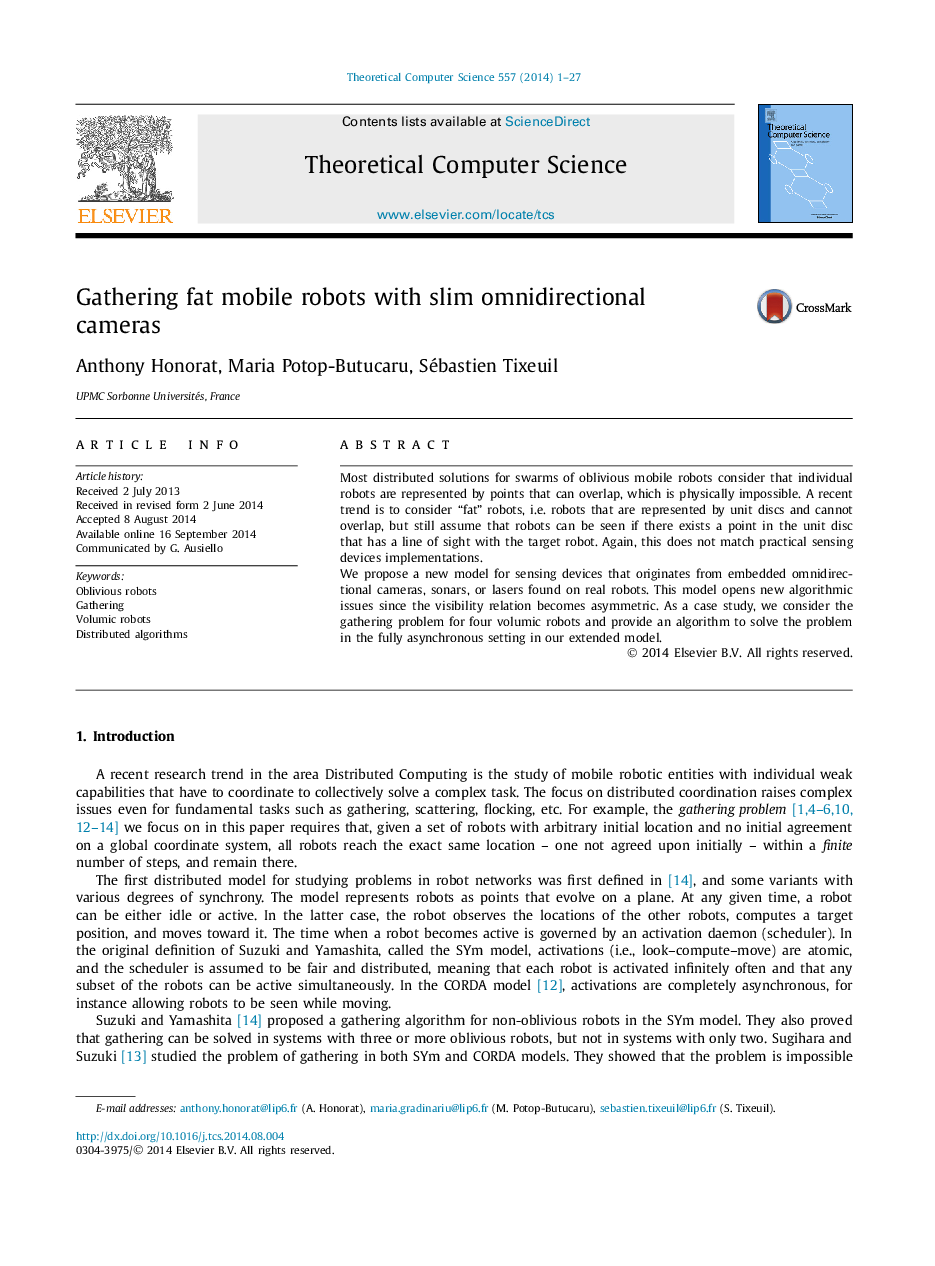| Article ID | Journal | Published Year | Pages | File Type |
|---|---|---|---|---|
| 436293 | Theoretical Computer Science | 2014 | 27 Pages |
Most distributed solutions for swarms of oblivious mobile robots consider that individual robots are represented by points that can overlap, which is physically impossible. A recent trend is to consider “fat” robots, i.e. robots that are represented by unit discs and cannot overlap, but still assume that robots can be seen if there exists a point in the unit disc that has a line of sight with the target robot. Again, this does not match practical sensing devices implementations.We propose a new model for sensing devices that originates from embedded omnidirectional cameras, sonars, or lasers found on real robots. This model opens new algorithmic issues since the visibility relation becomes asymmetric. As a case study, we consider the gathering problem for four volumic robots and provide an algorithm to solve the problem in the fully asynchronous setting in our extended model.
